What began as a niche method for personalizing T-shirts and jerseys has evolved into one of today’s most versatile decorating solutions: heat printing. This innovative technology can handle everything from simple logos to multilayered artwork on a wide range of fabrics. Unlike traditional methods that require large production runs and high setup costs, heat printing offers a cost-effective solution for small-batch and print-on-demand needs.
How To Heat Print on Beanies
Expanding Creative Possibilities with Heat-Printing Technology
By Kelly Walters
(Originally printed in the January/February 2025 issue of Insights.)
What began as a niche method for personalizing T-shirts and jerseys has evolved into one of today’s most versatile decorating solutions: heat printing. This innovative technology can handle everything from simple logos to multilayered artwork on a wide range of fabrics. Unlike traditional methods that require large production runs and high setup costs, heat printing offers a cost-effective solution for small-batch and print-on-demand needs.
With advancements in technology—such as precise heat presses, improved adhesives, and a wide variety of finishes—heat printing has solidified its place as a leader in custom decoration. Today, it encompasses screen-printed transfers, heat-transfer vinyl (HTV), direct-to-film (DTF) transfers, dimensional patches and emblems, sublimation, and more.
Heat printing works on a variety of products and fabrics. One popular product to consider is the beanie. No longer limited to cold-weather wear, beanies have become a year-round staple—perfect for branded giveaways, team spirit gear, and stylish accessories. Ready to begin? Here’s what you need to know about heat printing on beanies.
Choose the Right Fabric
Beanies come in a variety of materials like acrylic, wool, and polyester. Some fabrics can be more delicate under heat, so it’s important to understand how they react. Tightly knitted beanies tend to hold their shape better and are easier to work with when decorating. Here are a few tips to keep in mind:
- Adjust pressure: For sensitive materials, use lighter pressure to avoid flattening the knit or causing scorch marks.
- Use a flexible application pad: This helps disperse heat evenly and protects delicate fabrics while applying your design.
Choose the Right Transfer
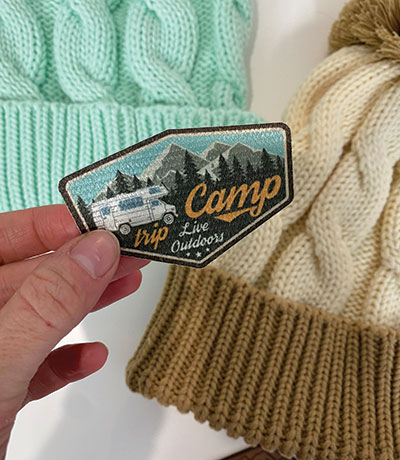 In heat printing, a transfer refers to a design or image that is preprinted onto a medium, which is then applied to a fabric using heat and pressure. You can choose from screen-printed transfers, vinyl, patches, emblems, or even textured options like foam or flock. Your transfer choice can elevate the look and feel of your finished product, depending on your customer’s needs.
In heat printing, a transfer refers to a design or image that is preprinted onto a medium, which is then applied to a fabric using heat and pressure. You can choose from screen-printed transfers, vinyl, patches, emblems, or even textured options like foam or flock. Your transfer choice can elevate the look and feel of your finished product, depending on your customer’s needs.
Consider showing your customer a few options—like good, better, and best—so they can choose what fits their budget and vision. Many customers will opt for a higher-end option if it looks impressive. Here are a few transfer options.
- Thin transfers: Great for showing off a beanie’s knitted texture.
- Dimensional transfers: Options like twill, foam, or flock add texture and a premium feel.
- Patches and emblems: Always a favorite, these options give beanies a bold, professional look
The Equipment You Need
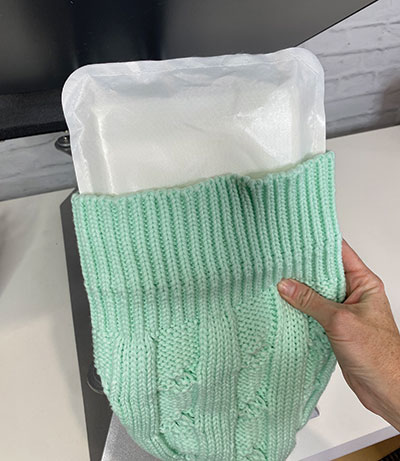
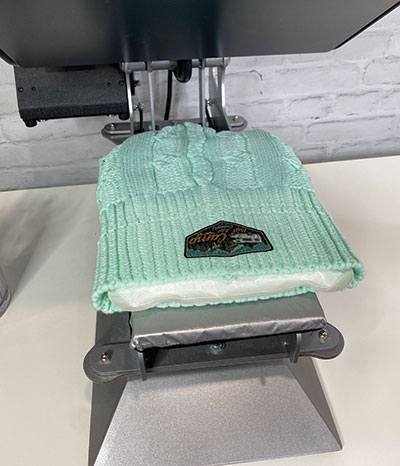
Whether you’re working with flat surfaces or curved designs, you will need a heat press to get the artwork onto the fabric.
- Flat heat press: A flat heat press is ideal for flat surfaces and allows you to use smaller platens for tighter decoration areas.
- Hat press: Designed specifically for headwear, a hat press gives you a curved surface and features both upper and lower heating elements, making it ideal for delicate or thick materials.
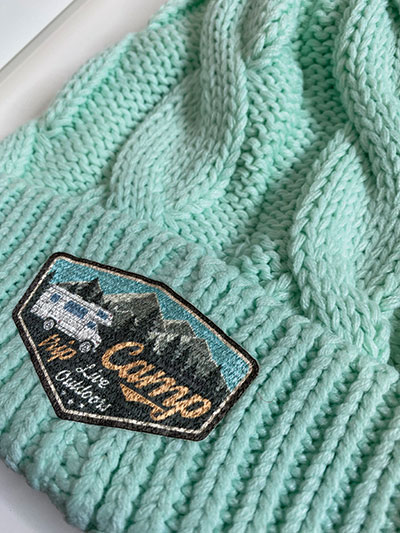
Step-by-Step Application Examples
Using a Flat Heat Press
For this project, we’re using a Hotronix Auto Open Clam 16x20 flat press with CAD-PRINTZ Texture Twill.
- Turn the beanie inside out and lay it flat on the heated platen to ensure a smooth, even surface. Use a pressing pillow for added support and to handle the thick knit.
- Place your logo upside down so it’s right side up when the beanie is flipped back. You may want to use the seam of the beanie as a guide for where best to place the patch.
- Cover the transfer with a sheet (such as a Teflon sheet or parchment paper) to protect your heating element, press, and design.
- Close the press firmly for the designated time based on temperature and transfer.
- Open the press and carefully remove the beanie.
- Flip the beanie right side out.
- Let the beanie cool before handling or wearing so the adhesive can set properly.


Using a Hat Press
For this project, we’re using the Hotronix 360 IQ Hat Heat Press with a Genuine Leather Patch.
- Position the folded band of the beanie on the curved surface of the press to ensure the patch area sits flush against the platen.
- Set your press to the correct temperature for the leather patch, using the lower heating element to protect delicate fabric.
- Place a 0.125-inch foam pad on top of the patch for even pressure and to prevent the patch from shifting or warping under heat.
- Pull down the handle and press for 30 seconds, making sure to maintain consistent pressure the whole time.
- Remove the beanie from the hat press immediately after to prevent overexposure to heat.
- Let the beanie cool before handling or wearing so the adhesive can set properly.
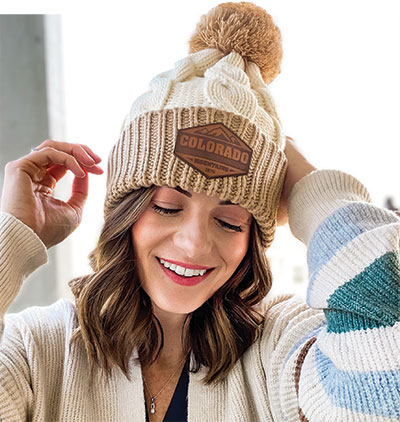
Heat printing continues to grow in popularity in the promotional products market. Its ability to customize diverse materials like hats, bags, and beanies with vibrant, durable designs ensures that brands can deliver eye-catching, personalized merchandise. As promotional items become more targeted and specific, the versatility of heat printing allows businesses to adapt to these trends, offering unique, high-quality products without the need for large inventories.
For small businesses, entrepreneurs, and even large-scale promotional operations, heat printing stands out as a flexible, efficient, and scalable solution for creating custom products.
Kelly Walters, content strategy manager at Stahls', has more than 20 years' experience in the apparel industry, specializing in cutting-edge heat-printing solutions. She is a heat-printing expert with extensive product expertise and a sharp eye for merchandising trends.
